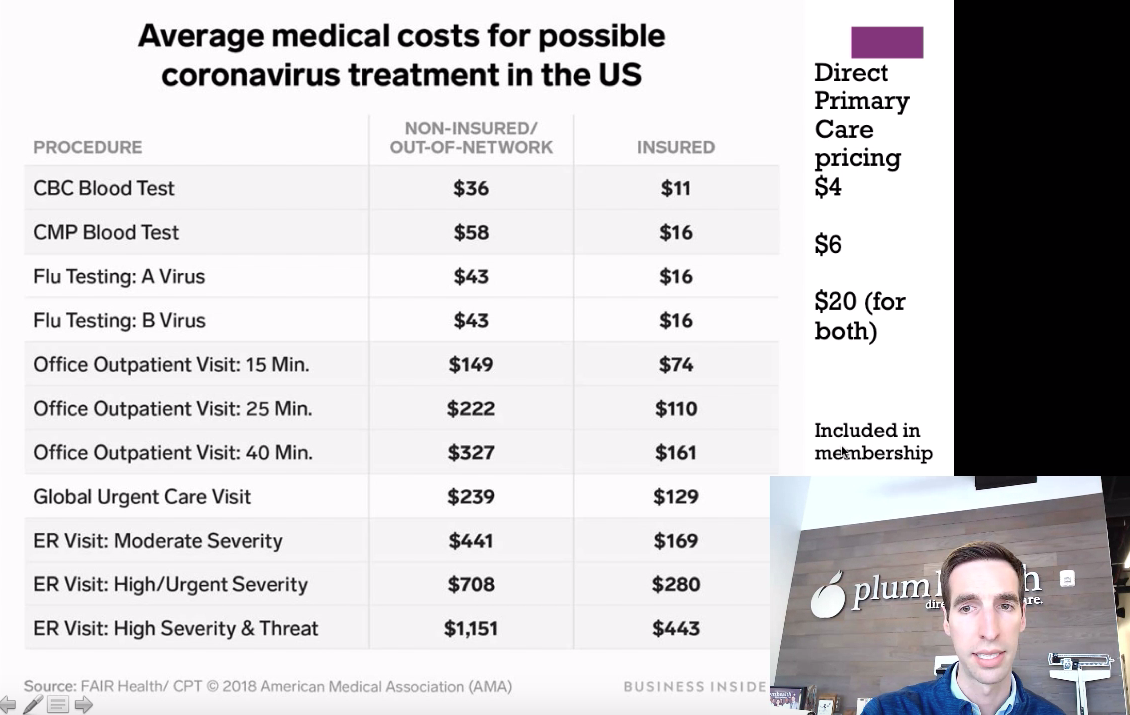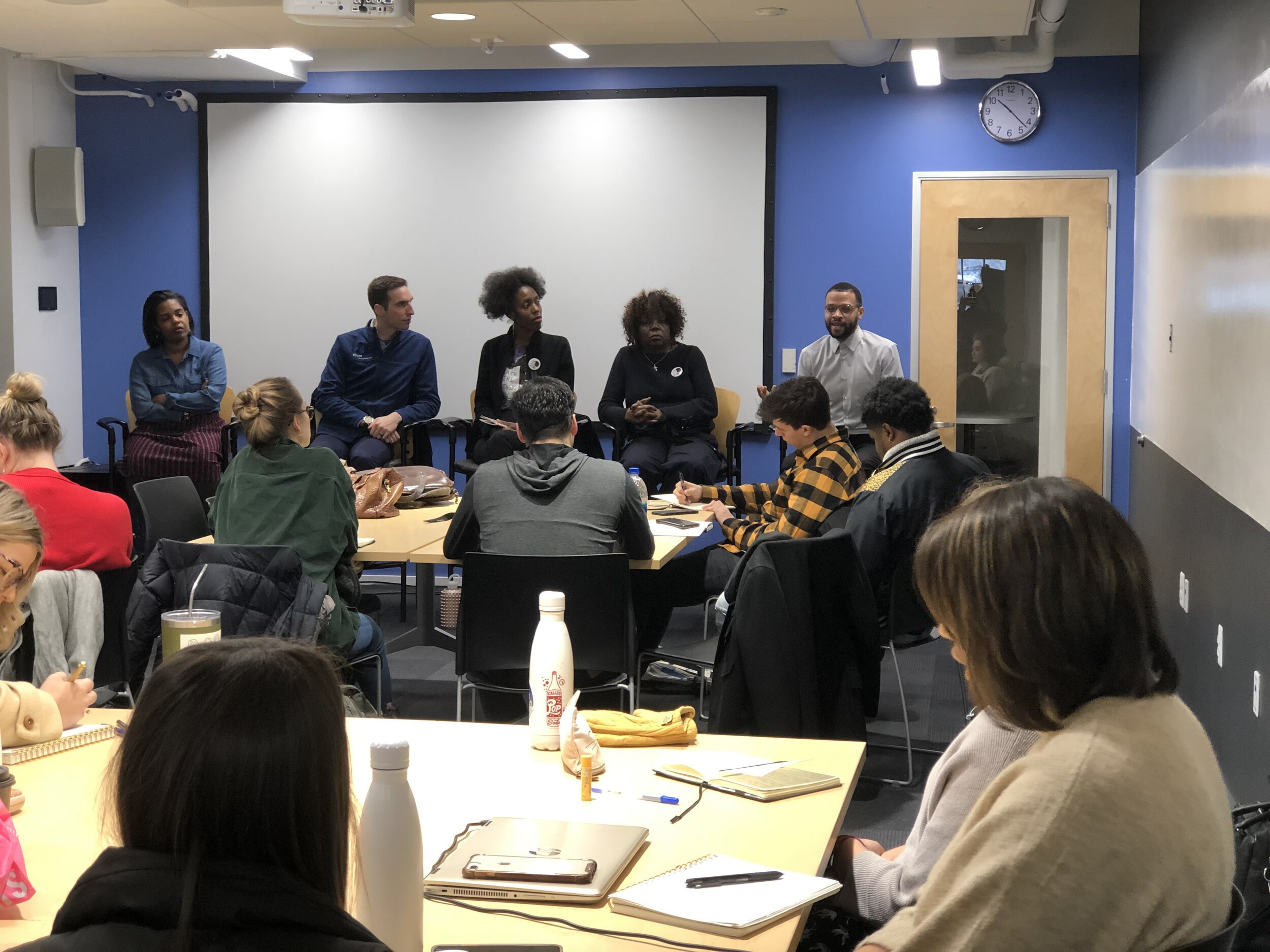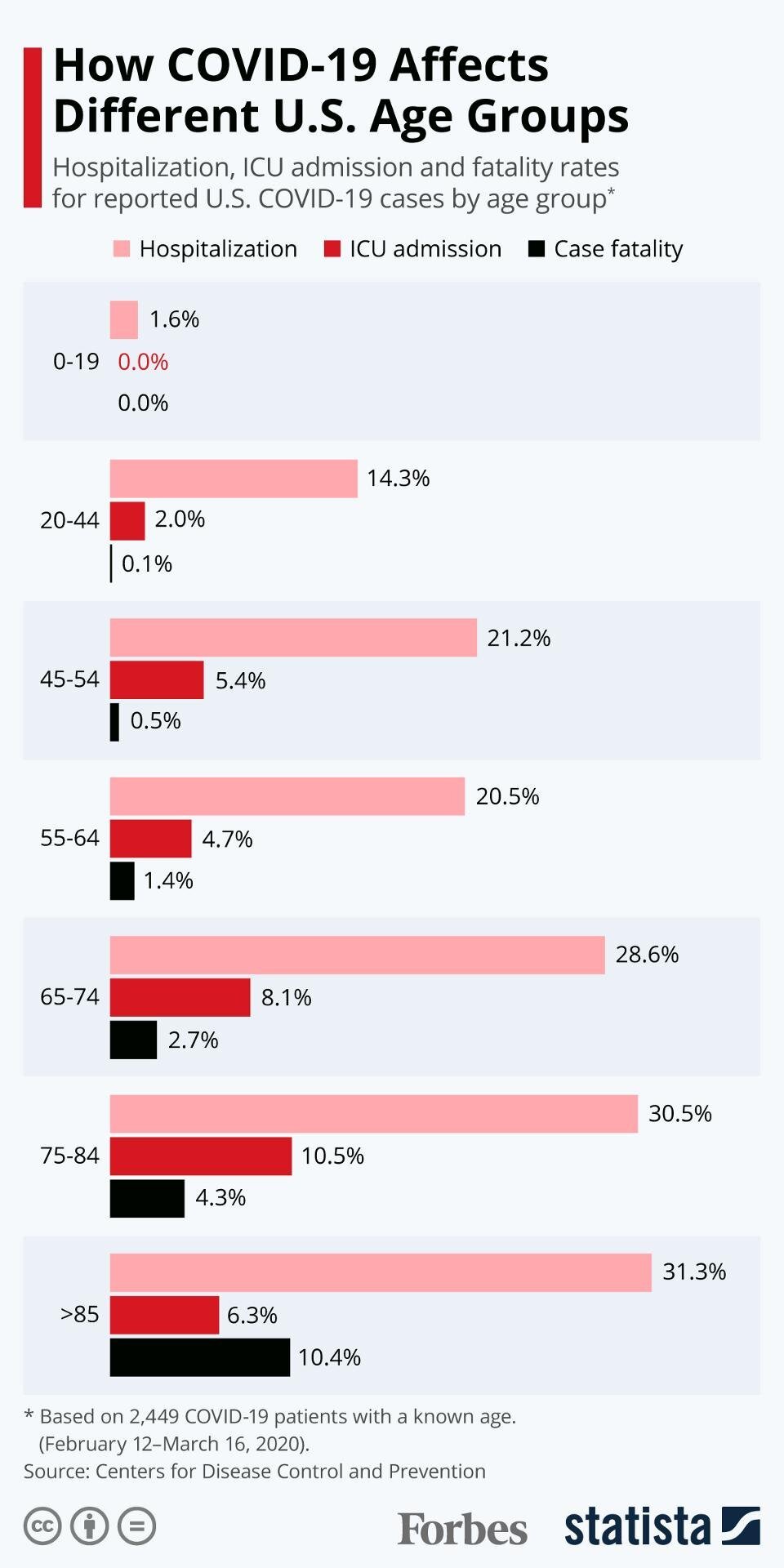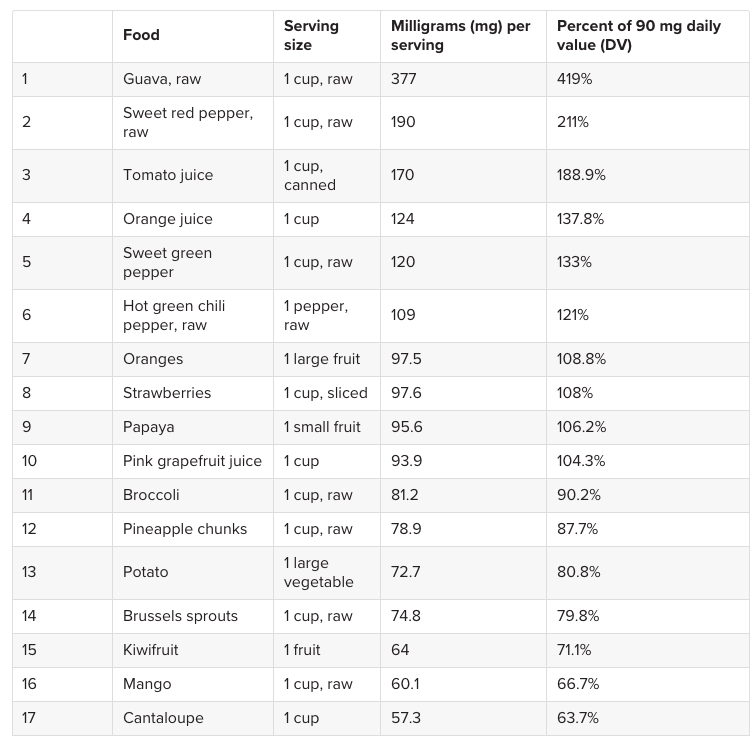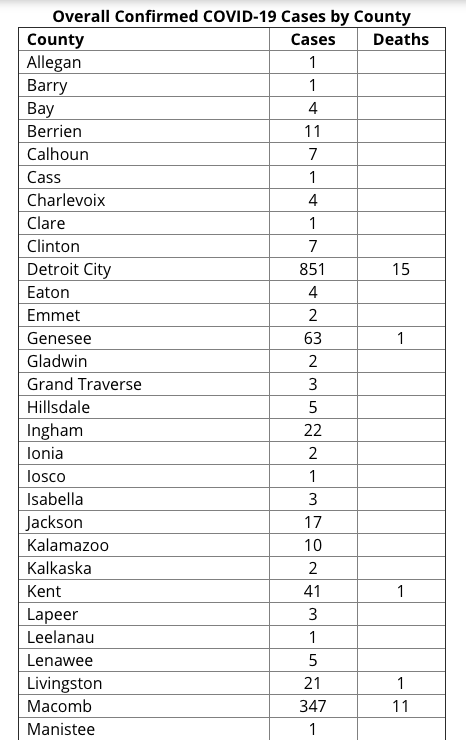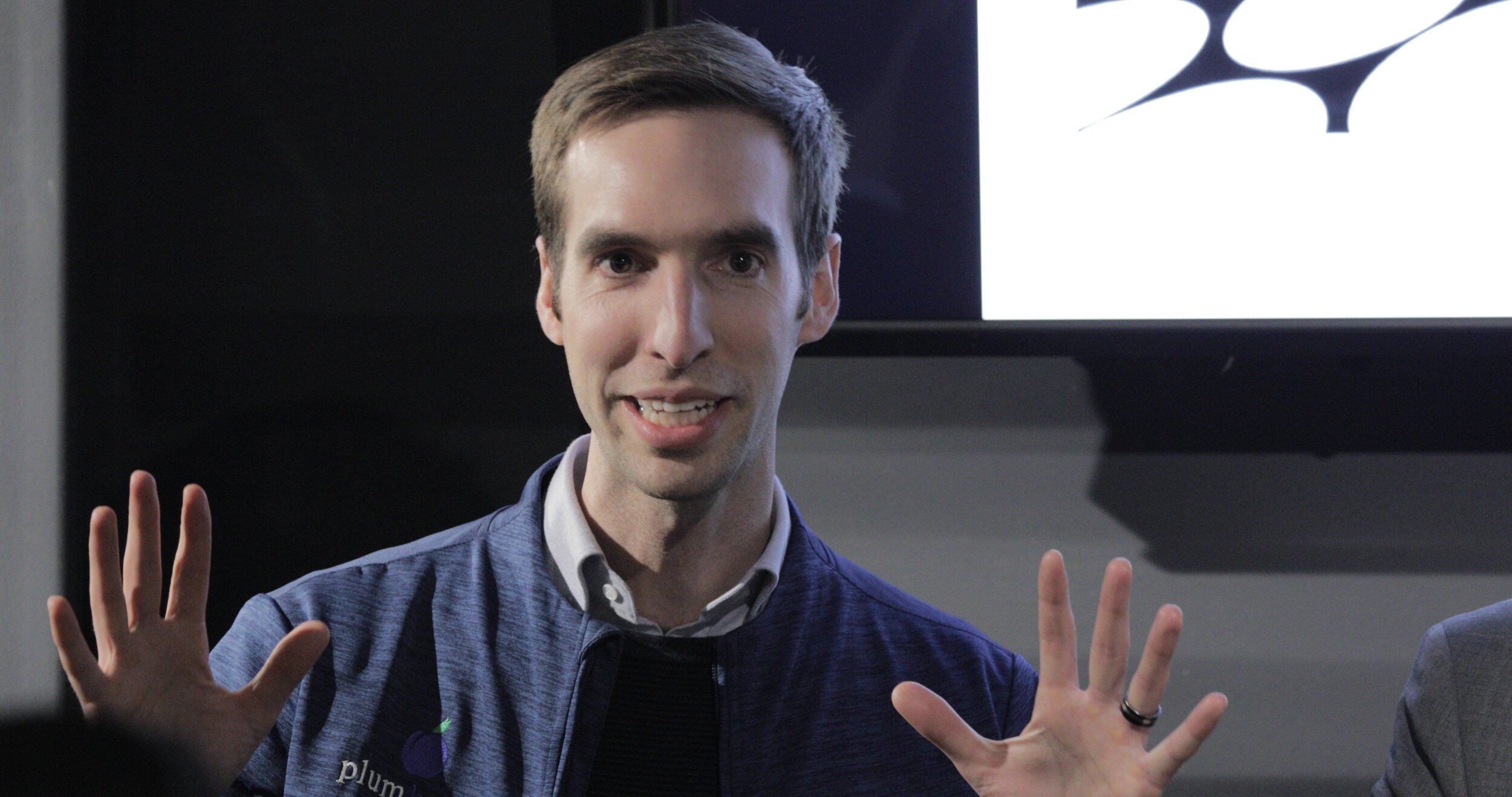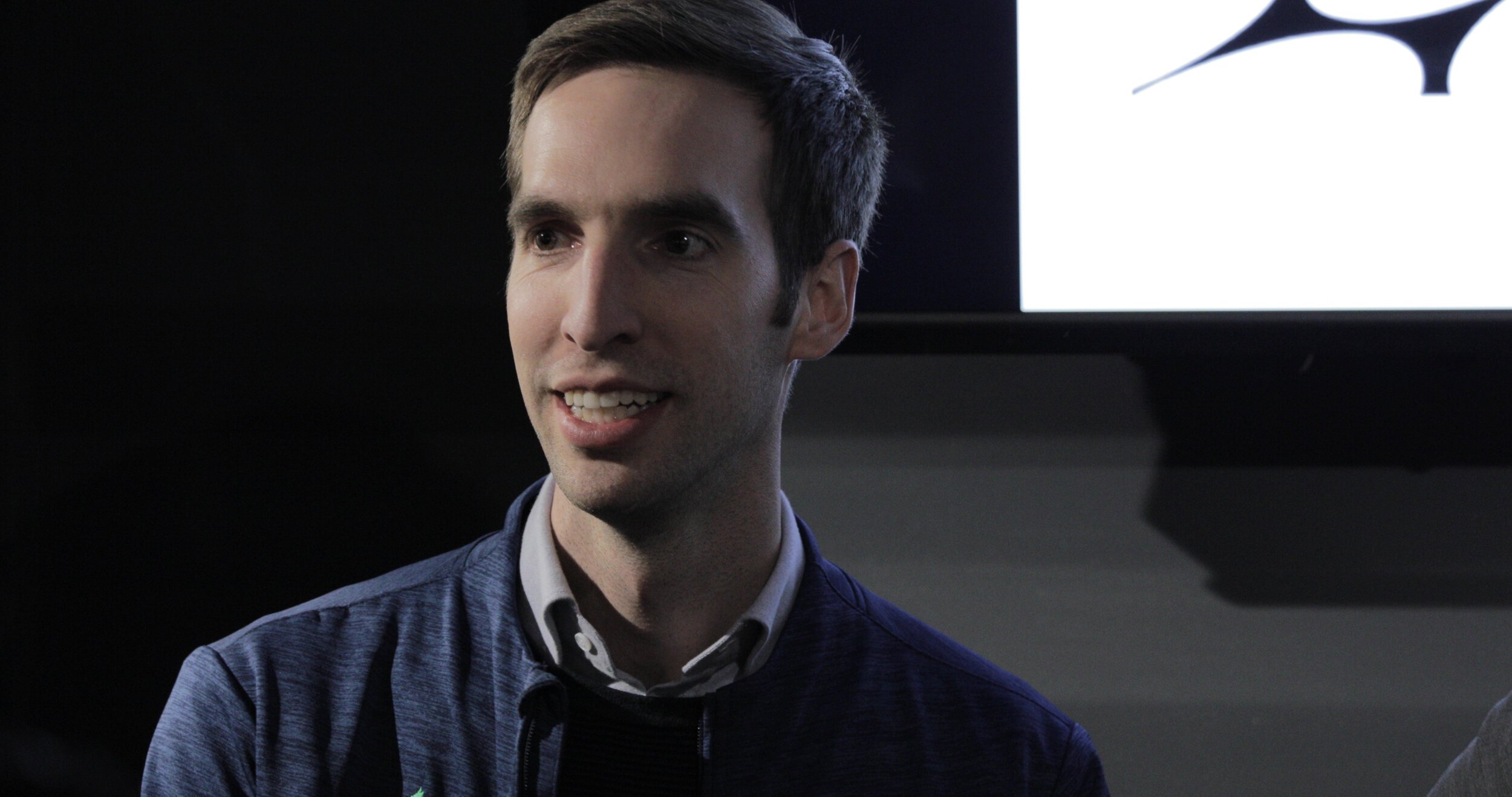Plum Health Blog
Dr. Paul Thomas on My Dream Big Club Podcast
Last week, I had a great conversation with Seun Phillips of the My Dream Big Club Podcast.
Episode 6 Link:
Show notes:
Dr. Paul Thomas sits down to discuss:
-Health care issues head on by spreading his innovative Direct Primary Care model, which provides affordable and accessible health care services
-How insurance plans directly correlate to doctors starting their practices in affluent areas
-Done is BETTER than perfect. Spend your time being decisive in your decision making process to keep the momentum going. Make the decision and deal with the consequences later
-Visualizing your dreams and creating a system to help you focus on your goal, revisiting your system when you're down and continuously progressing forward
Dr. Paul Thomas on Leading Questions
This week, I was interviewed on Leading Questions with Calvin Moore, Kent Straith, and Steve Phelps. Also on the show was Dr. Abdul El-Sayed a political pundit on CNN and author of the new book Healing Politics. We discussed the coronavirus and the flaws in our current healthcare system and political system that have allowed this virus to spread more widely and infect and kill more people.
Here’s the general topics we discussed:
Question: Tell us a little about yourself as a medical professional. How long have you been doing it and do you have a specialized area of focus?
Answer: For me, I’m a family medicine doctor. I started our direct primary care service, Plum Health DPC, to make healthcare more affordable and accessible here in Detroit. My practice started in 2016, and we’ve grown into a larger location in Corktown, Detroit on Michigan avenue. I work with a second doctor and we care for a diverse group of patients in terms of age, race, gender, abilities, orientation, socioeconomic status, and other factors. We’re proud to serve at the community level and to advocate for better health for our patients.
Question: Healthcare is an issue that is on everyone’s mind. What are some the glaring issues surrounding healthcare as you understand it?
Answer: Currently, the for-profit practice of medicine and the insurance based system of care has devalued primary care services that would help us prevent the spread of viruses. in our current system, elective surgeries like knee replacement surgeries and other procedural work receives the largest reimbursement from private health insurance companies and Medicare. So, our corporate hospital systems have maximized their ability to perform these procedures at the expense of a robust and well-functioning primary care delivery system. This disorientation has caused us to be vulnerable to pandemics like this.
Question: In 2019, “telehealth” was considered part of the future of medical care; however, the current pandemic has accelerated the progress and use of telehealth services. Do you see a time in the near future where telehealth successfully replaces some or most in-person office visits for routine services?
Answer: in our practice at Plum Health DPC, our patients can call, text, or email us anytime. We can also use video chats and we can text photos to help us better understand the conditions affecting our patients. We’re able to do this because WE DO NOT BILL OR USE INSURANCE. You see, your doctor cannot and will not text you after hours or even as a replacement for a typical visit because your doctor can only get paid by the insurance company for face-to-face visits. In our model, because our patients pay us directly, we change the way we deliver primary care to maximize the efficacy of our time and resources, and to give our patients an amazing customer experience.
Question: In an effort to curb the rising costs of health care and limit instances where patients have to pay out-of-pocket for services denied by their insurance companies, more and more medical procedures require prior authorization. Do you believe any changes are necessary to the prior authorization process that will allow you to better serve your patients, while at the same time reduce the rising costs of providing health care?
Answer: again, because we don’t bill or use insurance at Plum Health DPC, we don’t often go through the prior authorization system. In our model, we are extremely effective at lowering the cost of care, so it’s often times cheaper to buy the medication or get the lab test by paying cash for the service than by using the insurance policy to pay for an over-inflated cost of a lab test or medication. For example, if you got a complete blood count at the local hospital, they might charge you $125. That same complete blood count only costs $4 in our office.
Thanks for reading and have a wonderful day,
-Dr. Paul Thomas with Plum Health DPC
Coronavirus Update: What's Up With Antibody Testing?
Coronavirus Update for Detroit Michigan
As of April 16th, 2020 at 3 pm, there have been 673,215 cases of Coronavirus in the United States and 34,384 deaths from the Coronavirus in the US. This is a case fatality rate of 5.1%.
There have also been 29,263 Total COVID-19 cases in Michigan and 2,093 deaths in Michigan, for a case fatality rate of 7.15%. Further, Detroit has seen 7,383 Coronavirus cases and 546 Coronavirus deaths, for a case fatality rate of 7.3%.
Racial Disparities in Health Outcomes for the Coronavirus
There have been and there continue to be racial disparities in health outcomes related to the Coronavirus. Here in Michigan, African Americans make up only 14% of our state population, but account for 41% of the deaths due to Coronavirus statewide.
Here in Michigan, African Americans make up only 14% of our state population, but account for 41% of the deaths due to Coronavirus statewide.
In other regions, the disparities are even more evident. In Chicago, where African Americans make up only 30% of the population, they account for 52.1% of the COVID-19 cases, and 68.6% of the COVID-19 Deaths. You can read more about Chicago specifically, here.
In Louisiana, the disparity is similar. Louisiana’s population is 33% African American, according to 2019 U.S. Census data. According to the Governor of Louisiana, 70% of Louisiana’s coronavirus deaths are African Americans.
In Chicago, where African Americans make up only 30.1% of the population, they account for 52.1% of the COVID-19 cases, and 68.6% of the COVID-19 Deaths. You can read more about Chicago specifically, here.
When these stats are brought up, some people point to disparities in underlying health conditions as the reasons for these disparities in death rates among African American communities. And yes, that is the point - there are huge underlying health disparities between African American people, Caucasians, and other minority populations, and if we as a society want to stop pandemics from disproportionately affecting minority communities in the future, we will have to work tirelessly to address these health disparities.
Comparing Coronavirus and Influenza
Both Coronavirus and the Flu are spread by droplets, but Coronavirus may also be airborne, making transmission that much easier for Coronavirus. The incubation period for Coronavirus can be 1 to 14 days. This makes transmission of the Coronavirus much easier because during that incubation, the person who is infected may not have any symptoms, but they may be infecting others by shedding virus. This paired with the Transmission rate or R0, leads to a greater rate of spread and infection. This is why our stay-in-place orders statewide here in Michigan are so critical - we’re saving lives by staying at home and preventing the virus transmission.
Unlike the Flu, there are no available antiviral treatments and there are no vaccines for the Coronavirus. For the Flu, we have Oseltamivir (Tamiflu) and the Flu Shot to help us treat and prevent the Flu from spreading, but we don’t have these options for Coronavirus.
The hospitalization rate is much higher for Coronavirus, at 12 to 20%, whereas the hospitalization rate is only 0.6% to 1% for the Flu. Death rates are also very high for the Coronavirus. As discussed above, the case fatality rate for the US is 5.1% and the case fatality rate for Michigan is 7.15%. This makes the Coronavirus 50 to 70 times more deadly than the Flu.
How Much Does Coronavirus Care Cost?
The President has worked with health insurance companies to make Coronavirus testing free, but there are other costs that patients incur when seeking care for the Coronavirus. If you’re uninsured, you can be charged $149 for a 15 minute visit with your doctor, $86 for flu A and flu B testing, and $94 for some basic lab work.
Compare that with the cost of care in a direct primary care practice, where you pay a monthly membership of $49 to $99 monthly and all of your visits - in person and telemedicine - are included in the membership package. The membership also allows you to get steeply discounted labs, medications, and imaging services.
Comparison of Coronavirus care costs between those who are uninsured, those who have insurance, and those who are members of a direct primary care practice.
What is antibody testing for Coronavirus?
Antibody testing will become increasingly important as we as a Nation confront and manage the Coronavirus pandemic.
Currently, we as a medical community are offering RNA testing, which involves a nasal swab or a posterior pharyngeal swab. This test helps us identify those who actively have the virus and are shedding RNA. This is a good test and it tells us who is actively infected with the Coronavirus. The downside to this test is that there is a relatively short window of time when this test will detect the Coronavirus.
Soon, more and more private labs and hospitals will roll out Coronavirus antibody testing. The procedure looks like taking a prick of blood from the finger and testing that blood for antibodies, or proteins that your immune system makes to fight off this virus. First, your body makes IgM, and then your body makes IgG. IgG gives you long-term immunity to the Coronavirus, and immunologists anticipate that we will carry this immunity for 1 to 3 years.
So, if you test positive for IgM, only, you likely have only recently recovered from Coronavirus. If you test positive for IgM and IgG, you may have had Coronavirus approximately 14 days ago.
The only downside to these antibody tests is that we’re relying on the test manufacturers to produce an accurate test. That being said, this is the best tool that we have right now to find out who has had Coronavirus and who has built a robust immune response to Coronavirus.
What Can you do to Prevent the spread of Coronavirus?
Stay at home
When you go outside of your home, wear a mask and keep 6 feet between yourself and other people. Only go to the grocery store once each week to minimize unnecessary contamination and spread of the virus.
Donate extra supplies to hospitals or your primary care doctor’s office - we currently are running low on masks, so if you have them, we would appreciate a donation to keep our staff, patients, and community safe.
Unused N95 Masks
Unused Nitrile Gloves
Donate Blood
Donate Plasma if you’ve had Coronavirus and recovered - your plasma could be used to save a life.
DO NOT congregate in large groups
DO NOT visit elderly or vulnerable relatives, even if you feel fine
Act as though you have the virus
Thanks for reading and watching, and have a wonderful day,
-Dr. Paul Thomas with Plum Health DPC
Social Entrepreneurs Speak with Challenge Detroit Fellows at TechTown
On Friday February 7th, 2020, I was invited to be a panelist at TechTown Detroit to discuss social entrepreneurship. It was formally called “The Leadership Panel on Social Entrepreneurship” and we were invited to speak to a group of young professionals who are also known as the Challenge Detroit Fellows. From their website:
Challenge Detroit cultivates diverse, innovative, community-minded leaders from the city and across the country, fostering their talents to support local initiatives that move Detroit forward.
It was very nice to be thought of as someone who could make an impression on these Challenge Detroit Fellows and help them grow into more community-minded leaders.
I was invited by Shelley Danner, the Program Director for Challenge Detroit, and she also invited some influential leaders to the program. They include David Merritt of Merit Goodness and Pastor of the Straight Gate International church, Katrina Turnbow of KanopiSocial, and a mother-daughter entrepreneur team behind Black Girl MATHgic, Brittany A. (Sanders) Rhodes and Veneda Sanders.
We tried to share insights with the Challenge Detroit Fellows that would be meaningful for their work in Detroit and for their professional development.
I’ve been meaning to write about this experience for some time now, and I had a few moments to put together this blog post. But the bottom line is that I miss doing this sort of work, meeting with community leaders and meeting with emerging young professionals, and helping them to take the next step on their career path while learning from them and my peers.
It’s impossible to count how many events like this that the Coronavirus Pandemic has prevented us from engaging in, but I’m looking forward to doubling down on future events when the Covid-19 virus passes us by, after we flatten the curve and get back to normal life. I miss the handshakes, hugs, fist bumps, and pats on the back, the encouragement for the journey that you can only get in person.
Stay safe out there,
-Dr. Paul Thomas with Plum Health DPC
Speakers for The Leadership Panel on Social Entrepreneurship for Challenge Detroit, from left to right, David Merritt, Veneda Sanders, Brittany A. (Sanders) Rhodes, Paul Thomas, MD, Shelley Danner, and Katrina Turnbow.
Speakers for The Leadership Panel on Social Entrepreneurship for Challenge Detroit, from left to right, Katrina Turnbow, Paul Thomas, MD, Brittany A. (Sanders) Rhodes, Veneda Sanders, and David Merritt. Not pictured and moderating the panel is Shelley Danner, the Program Director of Challenge Detroit.
Paul Thomas MD interviewed on the Soul of Enterprise Podcast
This week, I had a one-hour conversation with Ed Kless and Ron Baker. Here’s the full audio recording:
Ed and Ron both asked some amazing questions, here’s what we discussed on the show, via their website:
Join Ed and Ron for our second interview with Dr. Paul Thomas, Founder of Plum Health DPC (Direct Primary Care), to discuss COVID-19, and his experience dealing with this from the front lines. Also, his new revolutionary business model in medicine. Is this the cure for our broken healthcare system, and how’s it going so far?
A Quick Bit About Dr. Paul Thomas
Dr. Paul Thomas is a board-certified family medicine physician practicing in Corktown Detroit. His practice is Plum Health DPC, a Direct Primary Care service that is the first of its kind in Detroit and Wayne County. His mission is to deliver affordable, accessible health care services in Detroit and beyond. He has been featured on WDIV-TV Channel 4, WXYZ Channel 7, Crain's Detroit Business and CBS Radio. He has been a speaker at TEDxDetroit. He is a graduate of Wayne State University School of Medicine and now a Clinical Assistant Professor. Finally, he is an author of the book Direct Primary Care: The Cure for Our Broken Healthcare System.
Here are Ed’s questions from the interview:
How are you?
What about the people in your local community, how’s it going there?
About 40% of hospital beds in Michigan are filled with COVID patients, does that sound right?
Is there a difference between intubation and being on a ventilator, or are they the same thing?
And that’s different from being on oxygen?
There are potentially long-term risks with being intubated, even after you come off it, such as challenges with your lung capacity coming back?
What has been the effect, if any, on your business model? Has there been any significant challenges with Direct Primary Care (DPC) model?
Are they waiving any regulations to be able to provide telemedicine, for example?
Do you think COVID-19 might lead to a significant increase in DPC?
Will doctors get acclimated to provide telemedicine?
The numbers we’re all seeing at John Hopkins or Worldometer, the numbers are pretty scary, but they are also are staggeringly incomplete. I don’t think we can really believe the number of cases in China being limited to 81,000, for instance.
You talked a little bit about the tests with Ron, what are your thoughts about the at-home tests? Will we all be able to test ourselves at home and get some better numbers about what’s happening?
The FDA and CDC sort of messed up the process with the test when all this began. What are your thoughts on that?
This is less political than governmental. The nature of bureaucracy that may have been the downfall, regardless of the administration.
On your website blog, you did a great job debunking the Vitamin C myth that’s out there. What about hydroxychloroquine as a possible treatment?
What about the potential vaccine for this? If one was quickly developed would we be able to get it out quick enough, or would that run into bureaucratic hurdles?
Does that 15-18 months include the testing and verification, or just the development of a vaccine?
What about links you’ve seen to diabetes or pre-diabetic condition, or does it mostly just affect those who are older?
Age and diabetes are correlated aren’t they?
…and here are Ron’s questions:
In times like this, do you think this business model has deepened your relationship with patients?
Do you think the subscription model helps you weather a storm like this rather than a more transactional business model?
Can you explain the protocol for a COVID-19 test? Don’t they test for the flu first, and only as a last resort test you for COVID-19?
We don’t have a clear idea of the “denominator,” we don’t how many people are walking around with asymptomatic symptoms, right?
Settle a big dispute: Should we be wearing masks when we go out? [Yes!]
Does it have to be an N95 mask? [No]
You probably remember that in 2009-10 we had the Swine Flu, and between April 12, 2009 and to April 10, 2010, 12,469 people died in the USA alone, with 87% being under age 65. What makes COVID-19 deadlier than the swine flu?
Can this can back in different strains? Can you get again once you’ve had it and recovered?
Have you seen any granular demographic, age, comorbidities information on the reported deaths and/or cases?
With older patients, there’s a difference between dying from and dying with corona virus. How do they make that distinction when they gather the death statistics?
The University of Pittsburgh has developed a vaccine, they say they’ve seen development antibodies in mice. And I just finished a book by the oncologist Dr. Azra Raza, who wrote The First Cell. She says, at least for cancer, having anything to do with mice doesn’t really work when translating to humans. But is that not true with vaccines? The fact it works with mice, is that promising for humans?
We say it takes 12-18 months to develop a vaccine. Is there a way for the FDA to expedite this process. What is the risk of a vaccine developed quickly?
On your website blog video from March 26, 2020 you answer the question, “How can I become immune?” You listed two ways:
Get Infected then Recover (your body produces IGM/IGG) and you now have the antibody
Vaccination
You said to create herd immunity you need 50-60% of people, can that immunity happen plasma transfusions from people who had the virus and recovered?
What about this virus running it course and achieving of herd immunity? How long does that process take without a vaccine?
Unless it comes back in a different strain?
I’m looking at Worldometer, and Michigan has now surpassed California in cases. We were taking flights from China during December and January, at the rate of at least 7,000 per day. There’s only 246 deaths in CA—each a tragedy—can you account for that? Why wasn’t CA hit has hard as New York, New Jersey, or even Michigan?
Could it be herd immunity, why CA wasn’t hit as hard?
Where do you see this ending? How and when?
Dr. Raquel Orlich Featured on WDET's Detroit Today
This week, Dr. Raquel Orlich was featured on WDET’s Detroit Today radio program. Dr. Orlich answered many insightful questions from both the host Stephen Henderson and callers. To listen to the show, follow this link.
Raquel Orlich, DO is a board certified family physician. She has been with Plum Health since July 2019 and everyday she works to deliver affordable and accessible health care in Detroit. She is passionate about quality patient-centered care and establishing strong doctor-patient relationships. Her clinical interests include osteopathic manipulative medicine for chronic musculoskeletal issues, women’s health, and preventative health. She is a graduate of Michigan State University College of Osteopathic Medicine and completed her residency training at Ascension Macomb-Oakland Hospital.
Dr. Paul Thomas and Dr. Raquel Orlich are family medicine doctors with Plum Health DPC in Detroit Michigan. Recently, Dr. Raquel Orlich was featured on WDET to discuss Coronavirus.
Here’s the abbreviated transcript from WDET:
Guests
Dr. Anne Messman, emergency room doctor at a Detroit Hospital
Dr. Raquel Orlich, family doctor at Plum Health Direct Primary Care in Corktown, Detroit
I live alone and have been sheltering in place. Is it OK for me to visit other people who have also been sheltering in place by themselves?
No. The social distancing guideline still stands not to visit people. Until we know how to identify asymptomatic carriers, we must stay apart, unfortunately.
Do asymptomatic people ever show symptoms, or do they stay asymptomatic?
“Asymptomatic carriers, by definition, never get sick or show symptoms, but they can still pass on the virus,” says Dr. Messman.
Can COVID-19 survivors get infected by coronavirus after they have recovered?
We don’t know, yet. We do know the coronavirus has mutated several times, so, at this time, we believe it is possible that a survivor could get the virus again.
How long does it take for someone to shed the virus?
It varies greatly. Some people stopped shedding the virus soon after recovery, and for others, it took up to a month. We also don’t know yet if you can infect someone while you’re shedding the virus.
I was exposed to someone who later tested positive for coronavirus. I have had symptoms including a cough and low energy, and I passed out recently. What should I do?
Since there is still no treatment for COVID-19, if you are experiencing mild symptoms, it is best to stay home and recover. Do not take NSAID medications like ibuprofen or Motrin. It is okay to take Tylenol if you want to treat a fever. If your symptoms are severe and you need medical attention, you should go to the hospital.
I had a cold last month and some of those symptoms are still lingering. Is that a symptom of coronavirus?
If you’ve had a cold, or have had seasonal allergies in the past, don’t worry. A tickle in the throat can last weeks after having a cold. However, if you have symptoms that are unusual for you, pay attention for symptoms of COVID-19 and take extra care. If you experience sever symptoms, go to a hospital.
Does using Tylenol to treat a fever negatively impact my immune response? Should I just leave the fever untreated?
Healthcare providers have differing opinions on this question, but if you have a fever and want to treat it, Tylenol is OK. A very high fever can be very dangerous and should not go untreated.
Does wearing a mask protect me, or other people?
Wearing a mask protects both you and other people. The main function of the mask is to catch droplets from someone coughing or sneezing before they get in the air. It is best to wear a mask if you need to go out.
I had a stomach virus recently. Is that a symptom of COVID-19?
Some patients who tested positive have experienced symptoms like diarrhea or vomiting. There are other reasons you might experience gastrointestinal issues including influenza or food poisoning.
I may have been exposed to someone with COVID-19, but I’m showing no symptoms. Can I get an antibody test to find out if am an asymptomatic carrier?
We do not have an antibody test, yet.
This week, Dr. Raquel Orlich was featured on Detroit Today with Stephen Henderson. She was able to answer many listener’s questions about Coronavirus and Covid-19
Coronavirus Update for Detroit Michigan
My name is Dr. Paul Thomas and I'm a Family Medicine Doctor in Detroit, Michigan with Plum Health DPC and this is my update for the Coronavirus as of Saturday April 4th.
Which Counties Nationwide Have been Impacted the Most by Coronavirus?
From the perspective of the number of cases and the number of deaths, the following Counties have been impacted the most by the coronavirus:
New York City (Queens, Bronx, Manhattan, Brooklyn, Staten Island)
Wayne County, Michigan
King County, Washington
Orleans County, Louisiana
Cook County, Illinois
Oakland County, Michigan
Bergen County, New Jersey
This comes from the Johns Hopkins Coronavirus Resource Center and it's notable that Michigan has two neighboring counties in the top 6 hardest hit counties - Wayne County and Oakland County.
What are the current number of cases and deaths from Coronavirus in Michigan?
Currently, there's 12,744 Coronavirus cases in Michigan and 479 deaths from the Coronavirus in Michigan. What's most troubling about this is the rapid and almost exponential growth of cases here in Michigan. We've seen cases doubling every 2 to 4 days, and that trend does not look like it's slowing down any time soon. That's why it's so crucial that we socially distance our selves to stop the spread of the coronavirus from person to person.
The alarming increase in new cases is also why the CDC now recommends face masks for individuals in the community.
Why Has Michigan and Southeast Michigan Been Hit So Hard by the Coronavirus?
Bridge Magazine wrote an excellent article on this and I agree with their assessment with one addition that we haven't been talking about.
In the article, Bridge Magazine talks about the following factors causing Michigan to be more susceptible to the virus:
Automotive trade with suppliers in Wuhan China
Detroit Metro Airport with Direct Flights to Wuhan, China
Michigan’s March 10th Presidential Primary
Ties between Detroit and Italy via Fiat Chrysler (FCA)
In addition to these factors, I would want to add a few others, including higher rates of overweight and obesity in Detroit and Michigan - rate of overweight is 47.5% in Detroit (34% in NYC) and rate of obesity is 34.6% in Detroit (22% in NYC).
All of these factors have lead to a higher case fatality rate here in Detroit and Michigan than the national case fatality rate:
National Case Fatality rate is 2.47%
Michigan Case Fatality rate is 3.75%
Detroit Case Fatality rate is 3.29%
What are the Comorbid Conditions Increasing the Risk of Mortality in Covid-19 positive patients?
This week, I spoke with a physician colleague at one of the nearby regional hospital systems and we discussed the conditions that lead to a higher mortality rate. These comorbid conditions are as follows:
Cardiovascular disease (High blood pressure)
Diabetes
Pulmonary Disease
Obesity
Cancer
These factors that we discussed were similar to those studied in Wuhan China.
Why are African Americans disproportionately affected by Coronavirus?
African Americans in Detroit and Michigan have been disproportionately affected by the coronavirus. Even though African American people make up only 13.8% of the population in the State of Michigan, 35% of the Coronavirus cases and 40% of the Coronavirus deaths have been experienced in the African American community.
Coronavirus Cases by Race in Michigan. This according to Michigan.gov/Coronavirus. Note the higher rates of infection and mortality in the African American community relative to the population. African Americans make up 13.8% of the population in the State of Michigan.
While it’s still too early to state exactly why this is the case, I have a few theories. First, African American folks have higher rates of diabetes, hypertension, and obesity than their white counterparts here in Detroit and in Michigan. As we stated above, these are risk factors for higher mortality from the Coronavirus. Next, African American people may be more likely to depend on low and minimum wage jobs that put them at a higher risk of contracting the Coronavirus.
What is the Hospitalization Rate for Covid-19?
Currently, the hospitalization rate for Covid-19 is about 20% or only 1 in 5 people who get the coronavirus will require hospitalization. However, the rates of hospitalization increase with age, meaning that the older the patient, the more likely that they’ll need to be hospitalized for the Coronavirus. That’s why it’s so important to avoid visiting elderly and vulnerable residents in our community.
The older the patient, the more likely it is that they’ll require hospitalization for management of their Coronavirus infections.
Unfortunately, there is a very high mortality rate once a patient needs to be placed on a ventilator. According to studies out of Wuhan, China, the Mortality rate from Coronavirus is 62% among critically ill patients with COVID-19 and the Mortality rate from Coronavirus is 81% among those requiring mechanical ventilation. That means that if you require mechanical ventilation, only 1 in 5 Covid-19 positive patients will come off of the ventilator.
Limited Availability of Ventilators in Michigan Hospitals
The rapid increase in the number of coronavirus patients and the increasing demand for ventilators is putting hospitals, doctors, and nurses in a terrible situation. We’ve now reached the point where doctors are having to decide who lives and who dies from Coronavirus based on ventilator availability. I spoke with a colleague at a large hospital in the Detroit area who relayed that there were only two ventilators for the hospital remaining and that treatment decisions were being made based on comorbidities.
This is a very sad day because we should have never gotten to this point. If we had a functioning Federal Government with a coordinated response and if we had forward-thinking hospitals with greater capacity for disasters like this, we in the medical community wouldn’t have to be making these terrible life and death decisions based on lack of supplies and equipment.
Should I Wear a Mask to Prevent the Spread of the Coronavirus?
Yes, the CDC now recommends that all Americans wear a mask when in a place where they have a higher chance of contracting the Coronavirus, like grocery stores. This can be a cloth or fabric mask. Please wash these each day if you wear them. Please do not horde surgical or N95 masks as these are needed at hospitals at this time.
What can you do to slow down the Coronavirus?
Stay at home
Donate extra supplies to hospitals or your primary care doctor’s office
Unused N95 Masks
Unused Nitrile Gloves
Donate Blood
DO NOT congregate in large groups
DO NOT visit elderly or vulnerable relatives, even if you feel fine
Act as though you have the virus
Thanks for reading and watching, and have a wonderful day,
-Dr. Paul Thomas with Plum Health DPC
Can Vitamin C Treat the Coronavirus?
Can Vitamin C Treat the Coronavirus?
No.
At this time, there is no evidence that Vitamin C can prevent or treat the Coronavirus.
In late March, I began to receive an uptick in questions about vitamin supplementation. There is little to no evidence that high doses of vitamin C will prevent or treat the Coronavirus. But some people have been recommending these supplements as a panacea for all viruses and all seasonal afflictions. There’s also been a few social media posts promoting vitamin supplementation as a cure for Coronavirus. In this blog post, I aim to set the record straight on vitamin C and Coronavirus.
What is Vitamin C?
First of all, Vitamin C (ascorbic acid) is an essential nutrient as it supports normal growth and development and it helps your body absorb iron. Your body doesn’t produce or store vitamin C, so it’s important to get enough vitamin C by eating a healthy diet.
Next, and according to the Mayo Clinic, the average adult needs 65 to 90 mg of vitamin C each day. Again, we can get enough vitamin C by eating a healthy, well-balanced diet. There’s 190 mg of vitamin C in a raw sweet red pepper and there’s 97.5 mg of vitamin C in a large orange. Other foods high in vitamin C include guava, tomato juice, orange juice, strawberries, papayas, and broccoli.
Here’s an awesome chart from Medical News Today that shows which foods are rich in Vitamin C.
The best way to get enough Vitamin C? A healthy diet. The above foods have adequate amounts of Vitamin C.
Where is this Bad Advice on Vitamin C coming from?
Here’s the issue, in late March I was forwarded general advice from a holistic doctor who went so far as to recommend as much vitamin C “as your body can handle” but at least 3,000 to 5,000 mg each day. In their words, this would protect you from the Coronavirus.
Not only is this person misleading their patients and giving potentially dangerous medical advice on a non-individualized basis, but he is also profiteering on their lack of knowledge. The doctor has an online supplement store where patients can purchase his recommended vitamins without a prescription for a hefty sum.
This email was forwarded to me from a holistic doctor who has been prescribing the above supplements as Coronavirus “protection.” As a family medicine doctor who follows evidence-based guidelines, it is very frustrating to see this type of bad information circulating via email and on social media channels.
Can Too Much Vitamin C be Dangerous?
When people think of vitamins, minerals, and supplements, they think of good health. If supplements are good, then more supplements are better, right? But what people don’t know, and what this vitamin-pushing doctor should know, is that mega doses of supplements can have negative consequences.
Most adults only need 65 to 90 mg of vitamin C each day, and adults shouldn’t take more than 2,000 mg each day. Although too much dietary vitamin C is unlikely to be harmful, mega doses of vitamin C supplements might cause diarrhea, nausea, vomiting, heartburn, abdominal cramps, headaches, and insomnia.
Let’s create a hypothetical patient who is a middle-aged adult man who takes Metformin 500 mg twice daily for his long-standing diabetes. The Metformin works well, keeping his blood sugar and hemoglobin a1c levels near normal. It’s important to know that adverse effects of Metformin include diarrhea, GI complaints, nausea, vomiting, and abdominal distention.
If both the Metformin and the high-dose Vitamin C are taken at the same time, the side effects from Vitamin C supplementation may be incorrectly attributed to the Metformin, potentially causing the patient to stop a beneficial medication.
Always Talk to Your Doctor about Your medications and your supplements
It’s entirely possible that in some cases, a patient might be taking mega doses of vitamin C, and not inform their physician of these supplements. Usually a doctor only asks their patients about which medications they’re taking, and not specifically about supplements. If the doctor doesn’t know about these mega doses of vitamins, those adverse effects caused by the vitamin C mega doses may be blamed on or attributed to a life-saving or life-prolonging medications prescribed by your doctor.
And this is just one example - many medications, from blood pressure medications to SSRIs for depression to other medications for diabetes like glipizide can have gastrointestinal side effects. So, please, talk with your family medicine doctor or internal medicine doctor about the medications and supplements that you’re taking.
What Can You do to help improve your immune system?
Here’s my recommendation for a healthy lifestyle during this time:
Exercise: 1 hour daily
Sleep: 7 - 9 hours daily
Eat: a balanced, healthy diet
Meditate: 30 minutes to 1 hour daily
If you choose to supplement with Vitamin C, talk with your doctor.
As a final note, the USA Today wrote a good article about this topic, and Harvard Health has another good article about this topic.
Thanks for reading, - Dr. Paul Thomas with Plum Health DPC
Coronavirus Update March 26th for Detroit Michigan: Can you be Immune to the Coronavirus?
Coronavirus Update March 26th for Detroit Michigan
The Coronavirus continues to spread in Michigan. As of today at 2 pm, the Michigan Department of Health and Human Services has reported that there have been 60 deaths and 2,856 cases. That is a mortality rate of 2.1% as of today.
The Coronavirus is concerning for so many reasons, but the two biggest reasons are the rate of transmission and the mortality rate. The Coronavirus spreads, on average, to 2.5 to 2.9 people once an individual is infected. Also, the global mortality rate has been in the 3 to 4% range. Compared to the Flu, these numbers are staggering. The Flu has a rate of transmission of 1.3 and a mortality rate of 0.1%. That makes the Coronavirus 30 to 40 times more deadly than the flu.
Below are the number of cases by Health Department here in Michigan and the number of deaths by Health Department. Detroit is within Wayne County, but it has its own health department, so those numbers are separate from Wayne County Cases.
How Many People Have Tested Positive and How Many People Have Tested Negative?
The State of Michigan today released their data regarding positive tests and negative tests.
30 of 744 outpatient tests have been positive, or a rate of 4.03% at the doctor’s office
1866 of 5261 hospital-based tests have been positive, or a rate of 35.4% at the hospital
557 of 3104 health department cases have been positive, or a rate of 17.9% at the health department
This tells us that if you’re well enough for your doctor to test you at the office and send you home, you are unlikely to have the Coronavirus. It also tells us that if you’re sick enough for your doctor to direct you to the hospital and you meet the testing criteria at the hospital (fever, cough, potential exposure), then you have a good chance of testing positive at 35.4%. This information can be found on the MDHHS Website.
Data from the Michigan Department of Health and Human Services showing the number of positive and negative tests in the State of Michigan as of 03/25/2020.
Hospital Beds are Filling up in Detroit
According to this article in the Detroit Free Press, the Beaumont Hospitals in Detroit and West Bloomfield are filling up with patients.
The health system is "facing limitations and nearing capacity with our testing, personal protective equipment and mechanical ventilators," said Beaumont Health Chief Operating Officer Carolyn Wilson. “We are taking steps to increase our capacity, such as converting some of our operating rooms into intensive care units.
“We have been actively transferring COVID-19 patients within our system to other Beaumont hospitals, as appropriate, if one hospital has more capacity than another."
According to this article in the Detroit News, Henry Ford Health System is facing the same challenges.
"Today our capacity is quite full at those two hospitals — West Bloomfield and Henry Ford Hospital in Detroit," said Dr. Betty Chu, associate chief clinical officer and chief quality officer. Chu is leading the health system's coronavirus response.
"We fortunately have the luxury right now of having additional capacity at some of our other campuses."
This is concerning because there are a limited number of staff, beds, and equipment to adequately are for Coronavirus patients here in the Detroit and Metro Detroit area.
As beds fill up and as our hospital personnel are stretched thin, we may be in a situation where doctors have to pick who lives and who dies simply based on issues of capacity. This is truly a terrible situation and one that we want to completely avoid.
That is why it’s so important to stay at home and avoid any unnecessary contact with people, by which you may become infected.
City of Detroit Will Begin Offering Free Coronavirus Testing Tomorrow
Unfortunately, the City of Detroit has been hit hard by the Coronavirus. But, Mayor Mike Duggan and the City of Detroit will begin testing people at the State Fairgrounds at 8 mile and Woodward to hopefully stem the tide. The aim is to test 50 people every hour and 400 people every day with this drive-through testing.
Testing is important because it can help us track the spread of infection and it can help people prevent the spread by self-quarantine if they find out that they are infected. You can learn more about this testing via the City of Detroit, here.
How Can I Become Immune to the Coronavirus?
Yes, you can become immune to the Coronavirus. When you get infected with the Coronavirus, your body will produce antibodies or immunoglobulins to the Coronavirus. First you’ll make IgM, and then IgG. This will confer long-term immunity to you.
Scientists estimate that you’ll be immune for 1 to 3 years based on previous infection and immunity rates from other Coronaviruses. This is why you can’t get re-infected by COVID-19. Once you have the virus, you’ll be immune to future infection.
This is important for several reasons. Over the next few weeks to the next few months, there will be a test of immunity. It will likely be a finger-stick blood test, using a drop of blood to measure the immunoglobulins like IgM or IgG to make sure folks are immune.
This will be especially important for doctors, nurses, hospital workers, and other critical staff. If we know that these folks are immune to Coronavirus, they can go back to treating patients with minimal risk of infection going forward. This test is pending as of now.
HOw will the Coronavirus Pandemic End?
The Coronavirus pandemic will end when we reach a Herd Immunity. Herd Immunity means that enough people in the population are immune to the Coronavirus, which will greatly limit its spread.
This Herd Immunity can be achieved in a few different ways. First, once a number of Americans get the Coronavirus, they will fight off the infection and become immune, limiting the spread of the virus once they recover. Second, once a vaccine is developed, many more people will become immune through vaccination.
Just like being vaccinated for the influenza virus or for Measles, Mumps, and Rubella, once you’re vaccinated for these viruses, your body creates immunoglobulins or antibodies to help protect you from infection from these viruses.
Unfortunately, the Coronavirus or COVID-19 vaccine will take 18 months to 2 years to develop, so this option will take a long time to achieve.
This image demonstrates Herd Immunity. The left hand panel shows what we’re dealing with right now with the Novel Coronavirus or COVID-19. No one is immune to this COVID-19 yet. The right hand panel shows Herd Immunity. The yellow figures are immune to the virus, so the spread of the virus will be limited. Herd Immunity defined: the resistance to the spread of a contagious disease within a population that results if a sufficiently high proportion of individuals are immune to the disease, especially through vaccination.
Thanks for reading and watching. Please stay safe and healthy in this time,
-Dr. Paul Thomas with Plum Health DPC
Single Largest Jump in Coronavirus Cases in a 24 Hour Period
Coronavirus Update: United States sees the single biggest increase in cases in a 24 hour period
Unfortunately, the United States has just witnessed the single largest increase in Coronavirus cases of any country in a 24 hour period. Over the last 24 hours, there have been 14,550 new cases reported in the United States according to this website.
Why is the Coronavirus Spreading so quickly in the United States?
It comes down to the concept of R⌀.
R⌀ is the average number of people that an infected person transmits the virus to.
If R⌀ is <1, the epidemic will burn out.
If R⌀ = 1, then epidemic will continue at a steady pace.
If R⌀ >1, the epidemic will increase exponentially.
Current estimates put R⌀ at about 2.5 to 2.9 (Peng PWH et al, 2/28). In plain English, this means that the average person with the Coronavirus will give the virus to 2.5 to 2.9 other people. This transmission rate is a bit higher than seasonal influenza. R⌀ is a reflection of both the virus and also human behavior. Interventions such as social distancing and improved hygiene will decrease R⌀.
Control of spread of COVID-19 in China proves that R⌀ is a modifiable number that can be reduced by effective public health interventions. The R⌀ on board the Diamond Princess cruise ship was 15 – illustrating that cramped quarters with inadequate hygiene will increase R⌀ (Rocklov 2/28).
The Coronavirus started with a single infected person, and it spread to roughly 2.5 to 2.9 other people. Once infected, those people passed the Coronavirus to another 2.5 to 2.9 people each. This is how a virus can exponentially spread. The Coronavirus spread has been hard to diminish because people have a relatively long incubation period or they have the virus and they don’t show symptoms of having the virus for a relatively long period of time, like 5 days to 10 days.
What should I be doing during the Coronavirus pandemic?
Definitely stay at home as much as possible. If you must go outside your home, practice social distancing and act as though you have the virus. Essential tasks done outside the home include buying groceries, making visits to the doctor, and picking up medications from the pharmacy.
How do I protect myself when I go outside?
First, avoid going outside unless you’re going for a walk or otherwise exercising in your neighborhood. If you must go outside, wear disposable latex gloves when you touch high-risk surfaces. For example, when you pump gas at the gas station, put on a pair of latex gloves during the credit card use, key pad entry, and handling the gas pump. Then, dispose of the gloves responsibly in a nearby trash can. Use hand sanitizer once you’re back in your car. Don’t touch your eyes, nose, or mouth after touching potentially contaminated surfaces. You can also use this routine of wearing latex gloves when grocery shopping or when handling a grocery cart.
Is it safe to get food delivered?
Yes, it’s safe to have food delivered and it’s safe to get take-out food. The best practice is to wash your hands after touching any packaging and to wash your hands again before eating. For instance, if you get your food in a brown paper bag, take your food out of the brown paper bag, recycle or discard the brown paper bag, and wash your hands before touching the food or individually wrapped food. Then, transfer the food to a plate or glass bowl and microwave the food for 30 seconds. This will kill any germs or bacteria in or on the food. Wash your hands again prior to eating.
What can you do to boost your immune system?
Many people want to know what they can do to boost their immune system to protect themselves from the Coronavirus. You can do the following to boost your immune system:
Sleep 7 to 9 hours each nigh
Eat nutritious and healthy foods
Drink plenty of fluids, mostly water
Exercise for 1 hour each day
Meditate to keep your stress levels low
When we’re stressed out, we tend to produce more cortisol, a steroid hormone that can weaken our immune system. That’s why it’s important to meditate, sleep well, and exercise.
What are good exercises during the Coronavirus quarantine?
You definitely want to exercise every day during the Coronavirus quarantine. Exercise will be good for your physical health, immune system, and emotional wellbeing. The best exercises will be to go outside of your house for a walk, jog, run, or bike ride. This is one of the few exceptions to the “stay at home” rule above. When you exercise, make sure that you’re keeping your distance from other people by at least 6 feet. You can exercise in your neighborhood or a nearby park. Avoid mall walking or any exercise where you’ll have to open a door/use a door handle for entry. That’s why we recommend folks avoid gyms and pools because there are just too many surfaces that could harbor the Coronavirus and potentially spread the infection. Therefore, exercise at home: lift weights, do floor exercises, do yoga or pilates. Fortunately, several health and fitness companies are giving free 30 day trials of home exercises - take advantage of these programs.
What can you do to slow down the Spread of Coronavirus?
Stay at home.
Act as though you have the virus and any interaction is a potential to spread the virus to a vulnerable person. People who are the most vulnerable are older adults or those with pre-existing medical conditions like lung diseases or cardiovascular diseases.
Do not visit nursing homes or elderly relatives, even if you feel well. You could be an asymptomatic carrier of the coronavirus and you could potentially endanger or kill the older adults that you visit.
Should you be sitting on a stockpile of extra medical supplies and equipment, please donate it to your nearest hospital or primary care physician office. If you have new and unused N95 masks or gloves, please donate them to these healthcare facilities.
Thanks for reading and watching, and have a wonderful day.
-Dr. Paul Thomas with Plum Health DPC
Detroit Doctor on AskASwimPro Show with Fares Ksebati
This week, I was invited on the AskASwimPro Show with Fares Ksebati. Fares is the CEO of MySwimPro, an App that helps swimmers improve their stroke, among other things. From their website:
MySwimPro is using technology to advance the sport of swimming and help swimmers all over the world achieve their goals in new and exciting ways. The platform is more than just an app, it's a community that keeps you accountable and pushes you to do your best.
In general, we had an informative discussion about the Coronavirus and its impact on our communities, specifically swimmers. Here’s what the MySwimPro team wrote about on their blog, found here:
In this episode of the #AskASwimPro Show, we interviewed Dr. Paul Thomas of Plum Health about the novel coronavirus, how to practice social distancing, the importance of “flattening the curve” and how swimmers can stay safe.
Dr. Thomas explained that many of us have had a coronavirus before, but that COVID-19 is more contagious. COVID-19 has a mortality rate of 3.5%, compared to the seasonal flu’s mortality rate of 0.1%, he says.
The virus spreads through coughing and inhaling someone else’s respiratory droplets. Due to this, Dr. Thomas explained that it isn’t wise to fly right now, since airplanes place you in close proximity to others.
He also noted that COVID-19 can live on surfaces for up to 3 days:
Stainless steel and plastic: 3 days
Cardboard and paper products: 24 hours
Copper: 4 hours
We go on to discuss social distancing:
Social distancing involves staying 6 feet away from others when you are outside, and avoiding contact with others while at home. You risk transmission any time you talk, shake hands or spend time around others. Dr. Thomas recommends that people avoid gathering with others and stay home in “self-quarantine,” noting that in cultures where it is common to kiss each other on the cheek or shake hands, COVID-19 can spread very quickly.
If you get COVID-19, you will be quarantined for at least 14 days, Dr. Thomas said. However, researchers have mentioned that you may be able to infect others for up to 20 days after showing symptoms.
We then discuss Flattening the Curve:
The healthcare system in the United States can only manage so many patients at one time, Dr. Thomas said. By practicing social distancing, we can “flatten the curve,” reducing the number of COVID-19 cases at a given time and keeping healthcare providers within their capacity. If we don’t do this, Dr. Thomas noted that the U.S. healthcare system will be unable to effectively care for patients.
We then talked about how you can stay safe during this Coronavirus Pandemic:
Dr. Thomas shared tips to stay safe and healthy:
Wash your hands: Before you prepare food, after going to the bathroom and before touching your face.
If you have a cough or a low grade fever (99 or 100 degrees Fahrenheit): Stay home, drink lots of fluids, take Tylenol and get some rest. You likely are not sick enough to benefit from a doctor’s treatment. Save the hospital beds — and the healthcare providers’ time — for those who are sickest!
If you have severe symptoms, such as a high fever and trouble breathing: Go to the hospital.
Thanks for reading and watching,
-Dr. Paul Thomas with Plum Health DPC
Detroit Doctor Answers Questions about Coronavirus on WDET's Detroit Today
Dr. Paul Thomas, MD, a family medicine doctor in Detroit answers many questions that Detroiters have about the Coronavirus and its impact on our community.
From WDET:
Dr. Paul Thomas is a primary care physician at Plum Health direct primary care in Corktown, an office that utilizes a monthly membership to treat patients rather than through insurance. He says that with job security threatened and instability on the horizon it is important to have comprehensive health care not tied to employer-based insurance.
His tips:
Keep a pair of gloves in the car to use at the gas station or grocery store to prevent touching contaminated surfaces when running essential errands.
The virus can live on cardboard for up to 24 hours. For this reason, leave mail out for roughly two days before picking it up.
Swap Tylenol for ibuprofen (based on an evolving scientific study).
To boost your immune system get eight hours of sleep, get some vitamin D when the sun is out and take a long (isolated) walk once a day.
If you are experiencing fever or shortness of breath seek medical treatment at the hospital.
Listen to the full episode, here.
Thanks for reading and listening!
-Dr. Paul Thomas with Plum Health DPC in Detroit Michigan
Flattening the Curve for Coronavirus in Detroit Michigan
Coronavirus is here in Michigan. As of now, there are 53 cases in the State of Michigan. So what can we do to prevent the spread of the virus? What does it mean to practice social distancing? What does it mean to flatten the curve?
What’s the best thing you can do to prevent the spread of the Coronavirus?
The best thing to do to prevent the spread of the virus is to act as if you already have the virus and do everything that you can to prevent transmitting it to your loved ones and vulnerable people in the community.
What is social distancing?
Social Distancing is a term applied to certain actions that are taken by Public Health officials and all of us to stop or slow down the spread of a highly contagious disease. Cancelling events that are likely to draw crowds is an example of social distancing enacted by Public Health officials. Social distancing enacted by us as individuals means deliberately increasing the physical space between yourself and the people in the community. This may look like staying at home away from other people or it may mean keeping a 6 foot space between yourself and other people in the community.
What does it mean to flatten the curve?
To flatten the curve is to decrease the rapid transmission of the Coronavirus and therefore decrease the peak number of actively infected individuals at any one time. This is important because if there are too many infected individuals, we will exceed our hospital bed and ventilator capacity. If we don't flatten the curve, there will be unnecessary deaths due to the spread of the Coronavirus.
What is the most common presentation for the Coronavirus?
A: The most common presentation for the Coronavirus is a one-week prodrome of myalgia or muscle aches, malaise or generally not feeling well, cough, and low-grade fevers. This gradually leads to more severe trouble breathing in the second week of illness. There is an average of eight days to the development of dyspnea and an average nine days to onset of pneumonia or pneumonitis.
How is the presentation of Coronavirus different from the presentation of Influenza?
A: Coronavirus tends to have a gradual onset. Influenza tends to have a sudden onset. Coronavirus tends to have a cough and fever. Influenza tends to have fever, chills, muscle aches, nausea, vomiting, and diarrhea.
What are the lab findings like for the Coronavirus?
A: The most consistently present lab finding was lymphocytopenia (with either leukocytosis or leukocytopenia). Lymphocytopenia is the condition of having an abnormally low level of lymphocytes in the blood. Lymphocytes are a white blood cell with important functions in the immune system. It is also called lymphopenia. The opposite is lymphocytosis, which refers to an excessive level of lymphocytes. During other infections, we typically see lymphocytosis or an increase in white blood cells to fight off the infection. Aside from the depressed white blood cell count, other markers like C-reactive protein or pro-calcitonin were not as consistent.
What are the most common radiographic findings for Coronavirus?
A: The most consistent radiographic finding, discovered on chest x-ray, is bilateral interstitial infiltrates also known as ground glass infiltrates or ground glass opacities. A radiograph is an image produced on a sensitive plate or film by X-rays, gamma rays, or similar radiation, and typically used in medical examination.
Can you get a co-infection with another virus or bacterial infection when you get the Coronavirus?
A: Co-infection rate with other respiratory viruses like Influenza or respiratory syncytial virus (RSV) is less than two percent. Basically, if you have a positive test for another respiratory virus, then you do not test for COVID-19. This information is based on a large dataset from China.
When people get the Influenza virus, they don’t often die from the Influenza virus, but from a subsequent and opportunistic bacterial infection like a bacterial pneumonia. Is this the case for Coronavirus?
So far, there have been very few concurrent or subsequent bacterial infections, unlike Influenza where secondary bacterial infections are common and a large source of additional morbidity and mortality.
How much does it cost to get the Coronavirus test?
A: It depends on the lab, the health system, and the insurance company. LabCorp is offering a test for roughly $50, Quest Diagnostics is offering a test for roughly $250, and the test may be free for those who have insurance, depending on your symptoms.
What can we do to treat the Coronavirus?
A: To date, patients with severe disease are mostly getting Remdesivir from Gilead through compassionate use. However, the expectation is that avenue for getting the drug will likely close shortly. It will be expected that patients would have to enroll in either Gilead’s randomly controlledtrial or the National Institute of Health’s “Adaptive” randomly controlled trial (Remdesivir vs. Placebo). Others have tried Kaletra, but that medication was not beneficial.
How long are patients contagious after they contract the Coronavirus?
A: The short answer is that patients are likely contagious for 20 days after contracting the Coronavirus. The more complicated answer is that patients can shed RNA from one to four weeks after symptom resolution, but it is unknown if the presence of RNA equals presence of infectious virus. For now, COVID-19 patients are cleared of isolation once they have two consecutive negative RNA tests collected more than 24 hours apart.
Thanks for reading and stay safe out there.
-Dr. Paul Thomas, MD with Plum Health DPC
Coronavirus Update for Detroit Michigan March 2020
Coronavirus Update for Detroit, Michigan for March 2020
I’m a Family Doctor in Detroit, and today I’ve gotten a ton of questions about the Coronavirus - ask me anything!
For starters, here’s what I sent out to all of my Plum Health DPC (https://www.plumhealthdpc.com/) patients earlier today and I thought everyone should know these things as well. Beyond what’s written below, ask me anything:
Plum Pack!
The Coronavirus is causing concern at this time - the President spoke last night about closing access to the USA from Europe, the NBA, NHL, and NCAA have cancelled/postponed all of their games, and other major events have been cancelled - but do not panic.
People Will Become Sick This Spring
Many people will get sick and have upper respiratory symptoms over the next few days and weeks. Most of these will be from the common cold, many of these symptoms will be from seasonal allergies, some will be the flu, and some may be due to the Coronavirus.
What I can do for you is to help you triage - I can help you determine if you're sick with the flu, a cold, or having an allergy flare up. I can help you determine if you have symptoms that are concerning for the Coronavirus.
If you contact me and I'm concerned, I may send you to the emergency department for further testing. As of now, Coronavirus testing is not available at our clinic.
Here are some algorithms about how I approach caring for our patients, caring for all of you.
Additionally, heres information from the State of Michigan regarding Coronavirus, released earlier today:
Finally, below is what we know and what you can do to protect yourself:
What You Can Do to Prepare for the Coronavirus
You can prepare for the Coronavirus by taking several actions and non-actions:
wash your hands thoroughly before eating
wash your hands thoroughly after using the bathroom
wash your hands thoroughly before touching your T-zone (eyes, nose, or mouth)
Cough or Sneeze into the crook of your arm/the bend in your elbow; again, wash your hands after coughing or sneezing
purchase food and supplies in case you need to be self-quarantined
if you become sick with a respiratory infection, but you’re not sick enough to require hospitalization, you may need to self-quarantine or stay at home to avoid infecting your neighbors and co-workers
if you become ill, call your doctor and discuss your symptoms. It may be better to call or text your physician, as going to the doctor’s office may
cancel any non-essential travel to areas where the virus is spreading like China, Iran, South Korea, and Italy
avoid large gatherings - parades, sporting events, campaign rallies - to avoid catching the virus or spreading the virus
What We Know About the Coronavirus or Covid-19
Here’s what we know thus far:
Every single one of us has had a coronavirus infection in the past — it’s one of the viruses (along with rhinovirus, adenovirus, etc.) that causes the common cold. This novel Coronavirus (COVID-19) is just a variation (or mutation).
This new coronavirus can cause anything from nothing to a mild cold to a potentially lethal viral pneumonia.
Those who seem to be most affected by COVID-19 thus far are those who are more at risk to begin with: those who are older, those with multiple chronic health conditions, etc.
The evidence out of the initial outbreak in Wuhan, China revealed:
Median age = 59 years of age
Estimated basic reproduction number (the number of people an infected person infects) is approximately 2.2
The average length of time from the onset of symptoms to hospitalization was 9.5 to 12.1 days
There have been new coronaviruses in the past — most notably the SARS (2002, 2003) and MERS (2012 – Present) epidemics; however, the mortality rate of COVID-19 (2.0% to 4.0% or below) is notably lower than SARS (9-10%) and MERS (36%).
From the WHO, they estimate that the mortality rate is somewhere around 3 - 4%. We are more concerned about this Coronavirus than the typical flu virus because of this higher mortality rate. https://www.who.int/docs/default-source/coronaviruse/situation-reports/20200306-sitrep-46-covid-19.pdf?sfvrsn=96b04adf_2
This virus spreads from person to person, though we aren’t exactly sure how. Our best hypothesis is that it is spread via bodily fluids and droplets from speaking, breathing, coughing, sneezing, etc (and potentially through the GI tract).
Children absolutely can get the Coronavirus that causes COVID-19. Two interesting points about pediatric patients: 1) there is early evidence that they carry a high “viral load” and — combined with the fact that they aren’t great at washing hands, not touching their face, etc. — because of this may be more likely to spread the illness and 2) children who do get COVID-19 seem to have a lower mortality rate than those who are older who contract the disease.
Here’s what we don’t know:
We don’t know if this virus will peter out as the warmer months kick in; we also don’t know if this is a one-season thing or if it will come back strong again next cold & flu season.
We don’t know when or if we’ll have a successful vaccine to prevent against this new virus. In a late February 2020 press conference, Dr. Anthony Fauci did a great job describing how a vaccine is created (starts at about 11:00 into the clip) and how far we are away from a successful vaccine.
How to Protect Yourself and Others from the Coronavirus
How to protect yourself & others:
Just like any other respiratory virus: stay home if you’re sick!
Just like preventing any other respiratory virus: take good care of yourself! Exercise regularly, eat nutritious, balanced meals, practice stress mitigation techniques, and get a solid 7-9 hours of sleep a night, etc.
Just like preventing any other respiratory virus: wash your hands! A lot!
Just like preventing any other respiratory virus: don’t touch your eyes, mouth, nose, etc., and get into the habit of washing your hands before eating.
If you can, avoid contact with those who are sick or are caring for the sick.
If you are not actively sick (or caring for someone who is), ear-loop/surgical masks are not likely helpful. Healthcare workers will wear masks (and often higher-rated ones than the ear-loop masks), as they have a much higher likelihood of caring for someone with the disease and are prioritizing mitigating the spread to others.
Those who are exposed to someone with COVID-19 or those who are being tested for COVID-19 will likely be asked to self-quarantine (currently not mandatory). If your job permits, start asking your employer about work-from-home opportunities; if your job doesn’t permit work-from-home, ask your employer what their plan is to keep you safe!
Because of the real possibility of a quarantine, stock a couple week’s worth of non-perishable foods items in a pantry. Also make sure you have the basics — like medications, OTCs like ibuprofen, acetaminophen, diphenhydramine, and pseudoephedrine, and (a rational amount of) toilet paper, facial tissues, etc.
Dr. Raquel Orlich Reaches A Major Milestone
This week, Dr. Raquel Orlich reached a major milestone - she now has 200 patients in her practice panel. Here’s what we said on Facebook:
A huge congratulations 🎈 to Dr. Raquel Orlich. She joined our Plum Health direct primary care practice on July 1st 2019 and she’s already reached 200 patients in her panel!
Dr. Raquel 👩🏻⚕️ is intelligent, compassionate, and a relentless advocate for the health and wellbeing of her patients. She focuses on chronic musculoskeletal issues, women's health, and preventive medicine.
We’re lucky to work with you, and our patients are fortunate to have such a kind and caring doctor looking out for their best interests. 💯
Of note, Dr. Raquel has room for about 500 patients in her practice panel, so if you’d like to sign up to be one of her patients, head over to our Schedule Now page to get started!
-Drs. Paul Thomas and Raquel Orlich with Plum Health DPC
Do I have the Cold? Flu? or Strep Throat? Answers for People in Detroit Michigan
Do I Have the Cold, the Flu, or Strep Throat?
Dr. Paul Thomas and Dr. Raquel Orlich are family medicine physicians in Detroit Michigan. Their office is called Plum Health DPC and it’s located on Michigan Avenue in the beautiful Corktown Neighborhood of Detroit, MI.
Many people want to know if their sore throat, body aches, chills, fever, stuffiness, runny nose, or other symptoms are related to the cold, the flu, or strep throat. So, in this blog post and associated YouTube video, we’ll explore the differences between these clinical entities.
How Do I Know if I Have The Common Cold?
People with the common cold have a runny nose, a stuffy nose, congestion, sneezing, and a sore throat. Common cold viruses prefer to affect the back of the throat - these viruses have a predilection for the posterior pharyngeal tissues. This causes your mucus membranes to swell up, which causes fluid to leak out or what you experience as a runny nose or congestion, post-nasal drainage, etc… These symptoms tend to come on gradually.
For this viral pharyngitis or viral upper respiratory system or common cold, antibiotics are not indicated. Antibiotics do not work for the common cold, because the common cold is caused by a virus that mutates rapidly and is difficult to treat. Antibiotics are indicated for bacterial infections, like strep throat and pneumonia.
How Do I Know if I Have Influenza?
Influenza usually presents with extreme fatigue, muscle aches, and a fever. Sometimes we say that there’s an associated “pajama sign” - sometimes people are so weak and so tired that they can’t even change their clothes before coming to the doctor’s office, thus they come to the office in their pajamas. There can also be chest discomfort, chills, and a headache. There is often an abrupt onset to these symptoms. The symptoms of the flu are often more severe, and sometimes fatal unfortunately. This is why we worry more about the flu and why we recommend that everyone gets the flu shot.
If you are positive for an influenza infection, treatment with oseltamivir (Tamiflu) should be started within 24 to 48 hours of your symptoms. It must be started within this timeframe to be effective in shortening the duration of flu symptoms and decreasing the severity of the flu virus.
It’s the Middle of February - Will the Flu Shot Still be Effective?
Yes. We’re still in the influenza season, and the flu shot has been shown to be 40 to 50% effective in preventing the influenza virus from taking hold. So, we strongly recommend getting the flu shot if you haven’t done so already. The flu shot costs $20 at our office and about that price at most pharmacies ($15 - $30). And it’s very important to get the flu shot, not only to protect yourself, but also to protect your loved ones. If you get the flu shot, you’ll be less likely to transmit the flu to a more vulnerable person in your life, like a newborn in your family or circle of friends, or an elderly relative or elderly neighbor. Getting the flu shot helps to protect these more vulnerable people with less strong immune systems from getting the flu.
How Do I Know if I Have Strep Throat?
When people come to our office concerned about a sore throat, it’s hard to tell if it’s a viral pharyngitis or if it’s strep throat (a type of throat infection caused by a bacteria). Strep throat is an infection of the tonsils in the back of the throat by a bacteria, Group A Streptococcus. The “strep” in strep throat comes from a shortening of the bacteria name, Streptococcus. The strep bacteria infects the tonsils and causes localized pain and swelling as well as purulent discharge, ie a discharge of pus from the tonsils.
There’s also a diagnostic criteria for Strep Throat called the Centor Criteria. You get a point for having each of the following symptoms:
fever
tonsillar exudate (pus coming from the tonsils)
absence of a cough (no cough)
anterior cervical lymphadenopathy (swollen and often tender lymph nodes in the front part of the neck)
age younger than 14 years
Kids with a sore throat are more likely to have Strep Throat because they have larger tonsillar tissue when they’re younger. As people age, the lymphatic tissue, like tonsils, shrink in size. This makes it less likely for adults to get strep throat. Of note, the tonsils are like a sponge and they take up large amounts of bacteria and viruses and show it to the rest of our body to make sure that our immune system can respond appropriately to these foreign invaders.
Because Strep Throat is caused by a bacteria, it is appropriate to use antibiotics for this condition. We often use Amoxicillin 500 mg for adults and Amoxicillin with weight-based dosing for children. Fortunately, we carry this inexpensive medication in our office, which is convenient for our patients with Strep Throat.
I live in Detroit, Am I more likely to get the flu or the coronavirus?
You are much more likely to get the flu than the coronavirus if you’re living in the United States.
As of 02/21/2020, there have been 34 documented cases of the Coronavirus in the United States.
Now compare that to the flu or the influenza virus. According to the Centers for Disease Control and Prevention, there have been:
29,000,000 to 41,000,000 flu illnesses
13,000,000 to 19,000,000 flu medical visits
280,000 to 500,000 flu hospitalizations
16,000 to 41,000 flu deaths
We know that the Coronavirus is scary because it’s new and different, and coming from a foreign country. However, the best thing that you can do to prevent getting sick this year is to wash your hands, cover your cough, don’t share drinks or eating utensils, stay home from work when you’re sick so you don’t infect other people, and get your darn flu shot.
Thanks for reading and thanks for watching
-Drs. Paul Thomas MD and Raquel Orlich DO of Plum Health DPC
Delivering Excellent Customer Service in Primary Care
Delivering Excellent Customer Service in Primary Care
Recently, we were featured on Hunter Schultz’s podcast, Winning Healthcare Food Fights and we were able to talk about direct primary care and how we’re actively lowering the cost of healthcare while improving the customer experience in health care. You can listen to the podcast on a variety of platforms, from YouTube, to Apple Podcasts, to Anchor, and others. Here’s what Hunter Schultz had to say about the show:
American healthcare isn't known for great customer service. More like inconvenience. Dr. Paul Thomas thought differently and started Plum Health DPC in Detroit, MI. He learned a secret from other physicians. Changing the business model so his practice could focus on customer service and care. Along the way, he wrote one book and now helps other physicians looking for a better way to provide great patient care.
Dr. Thomas went the never crowded extra mile too. He opened Plum Health DPC in the Corktown area of Detroit, instead of Grosse Pointe. Every day, he and his team provide proof old-fashioned American ingenuity is alive and well. They are putting the Wow back into care by giving great customer service.
Visit Plum Health DPC, here.
His book, Direct Primary Care: The Cure for Our Broken Healthcare System, is available here.
For more resources and other information, please visit our website.
Paul Thomas, MD at the Plum Health DPC office in Corktown Detroit. The office is located at 1620 Michigan Ave, Suite 125, Detroit, MI 48216.
Many thanks to Hunter for putting together this interview, even more thanks to him for being an Alpha Reader for our first book, Direct Primary Care: The Cure for Our Broken Healthcare System. Here’s some of the topics we covered during the interview:
Exciting or positive things in the US Healthcare System, like the growing direct primary care movement and some free market elements in our current system that can help protect patients from overcharges in the current marketplace.
The types of tests or new tools for assessing health and wellness - things like 23andMe, Aperiomics, OneOme, Butterfly Ultrasound probe, texting, emails and more consistent communication with patients.
Integrating patients’ health goals into their care plan
Dr. Paul Thomas’ path to becoming a doctor - volunteering at Cass Clinic and working with compassionate doctors and medical students at Wayne State taking care of uninsured and underinsured patients in Detroit’s Cass Corridor
The simplicity of the Direct Primary Care model and aligning the incentives - when patients pay the monthly membership fee for a DPC practice, they are incentivized to use the system and to use the DPC service. Likewise, doctors are incentivized to take care of patients promptly and ensure optimal health and wellness. Doctors in the DPC model are also incentivized to not over-test and over-treat their patients. Rather, we focus on counseling our patients through their healthy behaviors to optimize wellness.
Price points at our model, seen here. Our price points are less than a cell phone bill for an individual and less than a cable bill for a family. We are cognizant of the median income in Detroit, our community, and that is $26,000 annually. We intentionally made our service affordable for anyone with an income in our community, and we deliver excellent primary care services to the folks that enroll in our clinic.
We discuss our recent Ribbon Cutting ceremony with Mayor Duggan and our recent move to 1620 Michigan Ave, Suite 125, Detroit MI 48216, which is 1.1 miles from our old office. We have a more conveniently location in Corktown, Detroit.
We recently hired a medical assistant, Chris, and we recently brought on a new doctor, Dr. Raquel Orlich who is quickly filling her practice with new patients. We typically have 25 to 30 new patients enroll in our practice each month.
We discuss having enough time to work with our patients. We typically have 30 minutes to 1 hour to spend with each of our patients. In the typical system, your doctor has 2,400 patients and they only get 10 to 15 minutes to take care of each patient. Having fewer patients allows us to have more time with our patients and to build trusting relationships with our patients.
We discuss the importance of having continuity of care, or a long-term relationship, with a primary care doctor. In our practice, we really focus on building the doctor-patient relationship and continuity of care.
Demonstrating how valuable it is to have a primary care doctor that knows you well.
Delivering an excellent customer experience in primary care at our Plum Health DPC office. This is achieved by meeting people at the door, having enough time for the appointment, addressing their concerns fully, giving the medications from our office and not sending them to a pharmacy, having the ability to draw blood in our office, and the ability to text and email our patients. Because we’re able to do these things well, our patients often have a “wow” experience. This becomes evident over time as more and more folks review our practice and our service (see Google reviews below).
Here’s more information about Winning Healthcare Food Fights in general:
Winning Healthcare Food Fights is a weekly online radio show covering important healthcare issues. Hear from physicians about getting better care, experts explaining how we arrived at our current mess, and how we clean it up!
Healthcare's solutions cannot possibly be described in 2 minute soundbites. It takes some time to sort through the mess to discover the attributes of great care and how we move forward.
The rewards are more confidence about the direction we must head, and what to do about it. Less fear, uncertainty and doubt.
Thanks so much for reading and watching, and have a wonderful day - Dr. Paul Thomas with Plum Health DPC
As of February 2020, Plum Health DPC has 63 five star reviews on Google. Our hours of operation are Monday through Friday, 9 am to 5 pm
Emerging Leaders Connect at Michigan Association of CPAs Event
Last week, I was invited as a speaker/panelist at the Michigan Association of CPAs event in Midtown Detroit. The panel focused on entrepreneurship and working with folks who are solo entrepreneurs and self-employed individuals. Many accountants and certified public accountants (CPAs) in Detroit and Metro Detroit are self-employed.
Additionally, many freelancers and self-employed individuals make more than the cutoff point for Medicaid in the State of Michigan (around $17,000) but not enough money to comfortably afford private health insurance. Or, self-employed individuals may not want to spend so much money on health insurance, and rather invest that money back into their businesses.
We take care of many folks in this situation - people are looking for alternative ways to manage their personal health and well-being, and many people are choosing direct primary care services like our Plum Health DPC service as a stand-alone service or as an add-on service to their health insurance plan or catastrophic coverage plan.
This was a great event and brought together many interesting accounting professionals. A big thank you to Matthew Kidd and the Michigan Association of CPAs for the invitation.
Further, it was a pleasure to share the stage with Andrew Dickow, the Managing Director at Greenwich Capital Group. He is an enthusiastic and engaging speaker, and he brought a ton of insights to the table regarding entrepreneurship, investment, and the food and beverage industry in Detroit and beyond.
-Dr. Paul Thomas with Plum Health DPC
We had a great time with the Michigan Association of CPAs Event, called Emerging Leaders Connect. It was a pleasure to speak with Matthew Kidd and Andrew Dickow regarding entrepreneurship in Detroit.
Photos courtesy of:
Kelly Dzierzawski | Video & Creative Services Senior Manager | Michigan Association of CPAs
Plum Health in Crain's Detroit Business
This week, we were featured in Crain’s Detroit Business under a special section regarding the Caring for Kids radio program. Here’s the part about Plum Health DPC, our membership model family medicine service in Detroit:
Caring for kids: Advocating for the mental and physical care of children
On his monthly radio program, The Children’s Foundation President and CEO Larry Burns talks to community, government and business leaders about issues related to children’s health and wellness.
Guests for this discussion were Dr. Stephen Bloom, Medical Director of Rehabilitation, St. Joseph Mercy Hospital Rehabilitation, Ann Arbor; Dr. Paul Thomas, Family Medicine Doctor, Plum Health DPC; and David Coulter, County Executive, Oakland County.
The hourlong show typically airs at 7 p.m. the fourth Tuesday of each month on WJR 760AM. Here’s a summary of the show that aired December 31st; listen to the entire episode, and archived episodes, at yourchildrensfoundation.org/caring-for-kids.
Larry Burns and Dr. Paul Thomas discuss Plum Health DPC
Larry Burns: Plum Health DPC (Direct Primary Care) is the first practice of its kind in Detroit and Wayne Country. Tell us more about your mission.
Dr. Paul Thomas: We believe that health care should be affordable and accessible. We’ve lowered the cost of health care and allowed people to be more proactive in taking care of themselves. With this direct care model, my patients—or members—pay me directly. It’s $10 a month for kids and then it starts at $49 a month for adults. They can come see me any time they need to. They also have my cell phone number so they can call or text me anytime.
Burns: What might a parent get for that $10 kid membership?
Thomas: You have a doctor on call for you. You might send me a photo of a rash and I could walk you through that. Or you might be concerned about an ear infection and I’d want you to come in to be seen for that. Or you have your well visit.
Burns: If somebody has insurance can they still be a member?
Thomas: Yes. We see people who are uninsured, under-insured, and fully insured.
Burns: What are the membership advantages for adults?
Thomas: Again, you have me on speed dial. We also do in-house labs and medications for all of our patients at significantly lower cost. For example, for a cholesterol panel at the hospital, you might be charged $100; at our office it’s $6. Or, if you came in to manage your blood pressure and you’re taking Lisinopril, that tablet might be $10 at the pharmacy for a one-month supply. At our office it’s 1 cent per pill, so your blood pressure medications now cost 30 cents a month.
Burns: How’s the practice going?
Thomas: We initially launched in 2016 as a house call practice. I had a small office in Southwest Detroit with about eight members. We’ve now grown to about 580 members. We hired a second doctor to help with the demand and we moved into a larger office in Corktown.
Burns: What is in the future for Plum Health?
Thomas: We want to continue to grow and bring on a new doctor perhaps every year to meet the demand. There are only 100 primary care physicians practicing in Detroit for 600,000 residents. That’s one doctor for every 6,000 residents. If you go north of Eight Mile into Oakland County there’s one primary care physician for every 600 residents. That’s a 10x disparity in primary care access.
Burns: How can someone become a member?
Thomas: Go to plumhealthdpc.com.
Thanks for reading and have a wonderful day, - Dr. Paul Thomas with Plum Health DPC
This week, we were featured in a special section of Crain’s Detroit Business.
This week, Paul Thomas, MD of Plum Health DPC was featured in Crain’s Detroit Business with Larry Burns, CEO of the Children’s Foundation.
Dr. Paul Thomas on WJR with Larry Burns of Caring for Kids
This week, Dr. Paul Thomas was featured on Caring for Kids with Lawrence J. Burns, which was broadcast on WJR at 7 pm on December 31st. In case you missed it, there’s a re-broadcast of the program today, January 4th at 2pm and again at 12am (midnight) on Sunday January 5th.
We talked about a number of topics. We discussed how your health is influenced by where you’re born and where you live. We also discussed how there are too few physicians in the City of Detroit for the number of residents in the city, and that there’s a 10x disparity in primary care access between the City of Detroit and communities in Oakland County.
We’re very grateful to Larry Burns and his outstanding team for hosting us on the show. It was a great experience and a great opportunity to raise awareness around the critical issues of primary care shortages in Detroit and the ways we’re addressing the high costs of health care in the city and beyond.
Larry J Burns of Caring for Kids with Dr. Paul Thomas of Plum Health DPC on WJR. Link to this tweet is here.
The full episode will appear on this webpage when completed: https://yourchildrensfoundation.org/caring-for-kids/. Again, you can hear the interview on WJR AM 760 today at 2 pm and Midnight tonight.
Thanks for reading and listening, - Dr. Paul Thomas with Plum Health DPC
Here’s a few more tweets and images from the interview:








